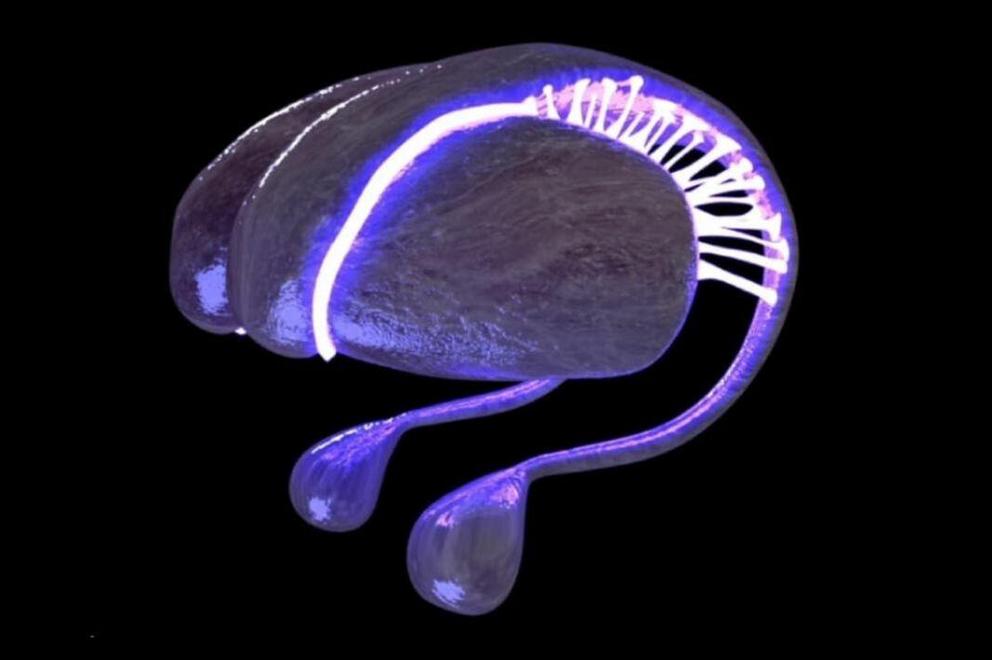Is the caudate-putamen an antenna for anomalous information?
What if there was physical evidence of a center in the brain whose configuration tracks with an individual’s intuitive capabilities?
In early 2018, researchers caught wind of a scientific study being done by Dr. Garry Nolan, Rachford & Carlota Professor in the Dept. of Microbiology & Immunology at Stanford School of Medicine, and Dr. Christopher ‘Kit’ Green, a physician in private forensic medical practice, and affiliated with the Departments of Diagnostic Radiology and Psychiatry and Behavioral Neurosciences at the Wayne State School of Medicine and Detroit Medical Center.
This was partly unearthed in a book entitled Phenomena: The Secret History of the U.S. Government's Investigations into Extrasensory Perception and Psychokinesis written by author, journalist, and national security reporter Annie Jacobsen. In her book, she interviewed both Dr. Garry Nolan and Dr. Christopher Kit Green, initially due to Dr. Green's earlier work on remote viewing, but during the book preparation process apparently found Dr. Kit Green was still involved in some fascinating studies. Dr. Green says in the book, "I'm interested in the notion of people injured physically by anomalous events.” Dr. Green goes on, "Often these events are perceived as [involving] unidentified aerial phenomena, or UAPs, drones, high energy radio frequencies that confront people face-to-face and cannot be explained."
The study involved, among others, a group of individuals termed these days as “Experiencers:” individuals experiencing Anomalous Mental Phenomena perceived through the senses including hallucinations, seeing beings and orbs, or hearing messages. One potential goal of the study involved identifying personality commonalities and, maybe, if “experiences” followed families—implying there might be a component that genetics plays in the experience process itself. Nolan and Green insisted that the study was not about determining the factual nature of the experience, just to determine if there were medical or familial relationships. There was also a Phenomenon Radio program hosted by Linda Moulton Howe and John Burroughs which featured an interview with Annie Jacobsen discussing this very topic.
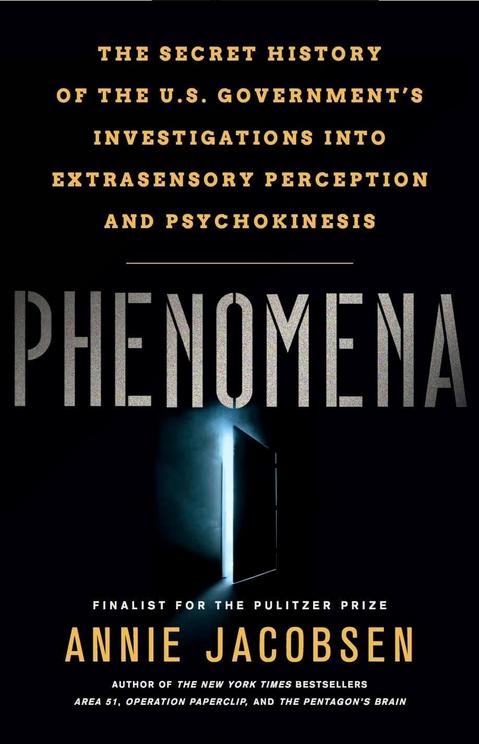

In late November of 2018 Dr. Nolan gave a presentation at Harvard Medical School's Consortium for Space Genetics entitled “Can Genetic Differences in Intuition and Cognition Drive Success in Space?” I caught up with Dr. Nolan to discuss the details of his presentation at Harvard for the contents and implications of this data. What I was told was both exciting and intriguing:
“We had groups of patients who objectively had a higher density of neuronal connection between the head of the caudate and the putamen.”
The caudate-putamen is a defined area in the brain based in the basal ganglia. Originally thought up until a decade ago to be mostly involved in motor control, more recently the caudate-putamen has been shown to also be involved with decision making, higher cognitive function, and intuition: non-conscious processing of sparse information. It is not too far a reach to assume that if humans did in fact have ESP capabilities, this area of the brain would make for a suitable candidate involved in processing information derived through anomalous means.
The group of 105 patients were made up of 60% male and 40% female individuals whom were among a group of individuals evaluated through high-field MRI brain scans. These patients selected were psychologically evaluated by Dr. Green and some met with Dr. Nolan. The major observation was that, apparently, the area of caudate-putamen in many of the individuals in the study was greatly enhanced over that of a reference “control” group of ~100 randomly chosen individuals. The connectivity, or density, of increased connections between the caudate and putamen ranged from slightly above normal to up to 8 times the control range. Interestingly, when family members were included as controls, it turned out that the feature of increased caudate-putamen connectivity was also found in some of the included family members. The MRI's of the patients (study participants and control MRIs) were read “blind” by professionals trained in brain physiology and reading of MRIs. In biological terms, the individuals with enhanced connectivity might be classed as hypermorphs, rather than the normal baseline caudate-putamen connectivity.
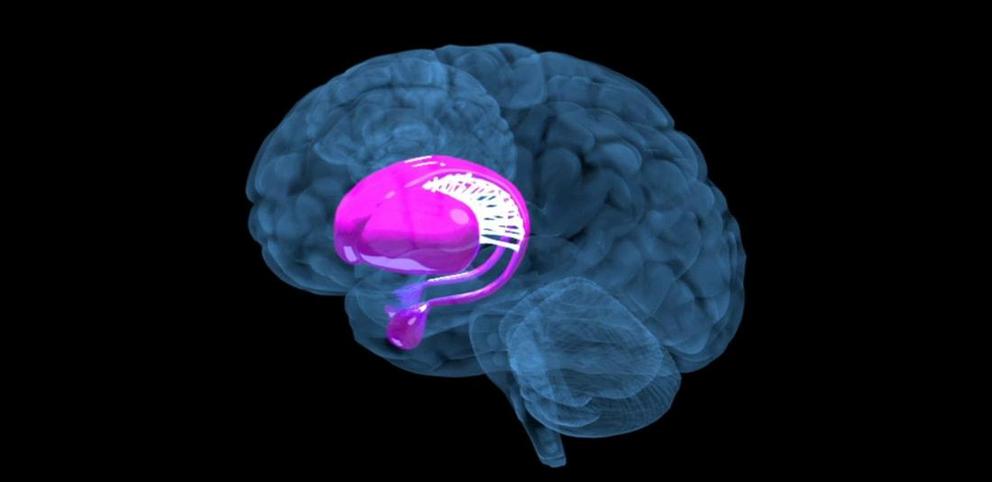
Caudate-putamen. Artist rendering, not to scale.
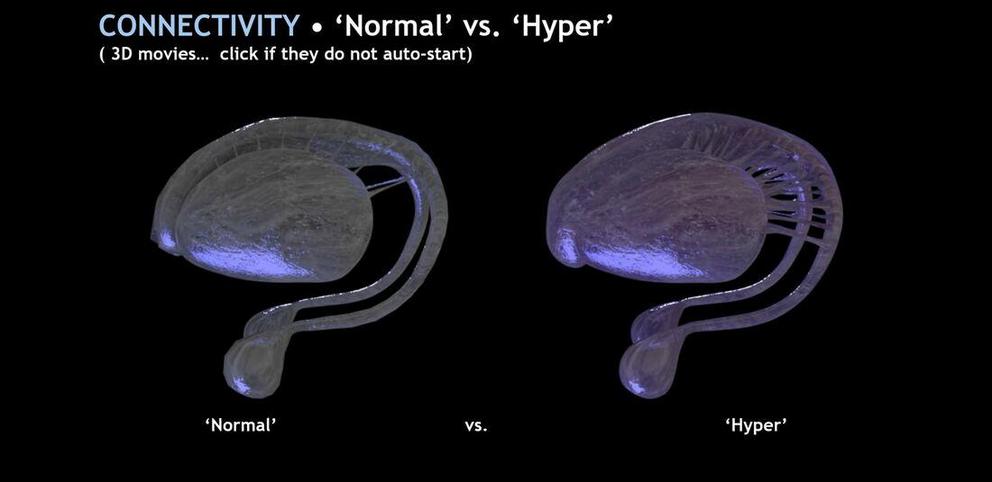
Artist rendering, not to scale.
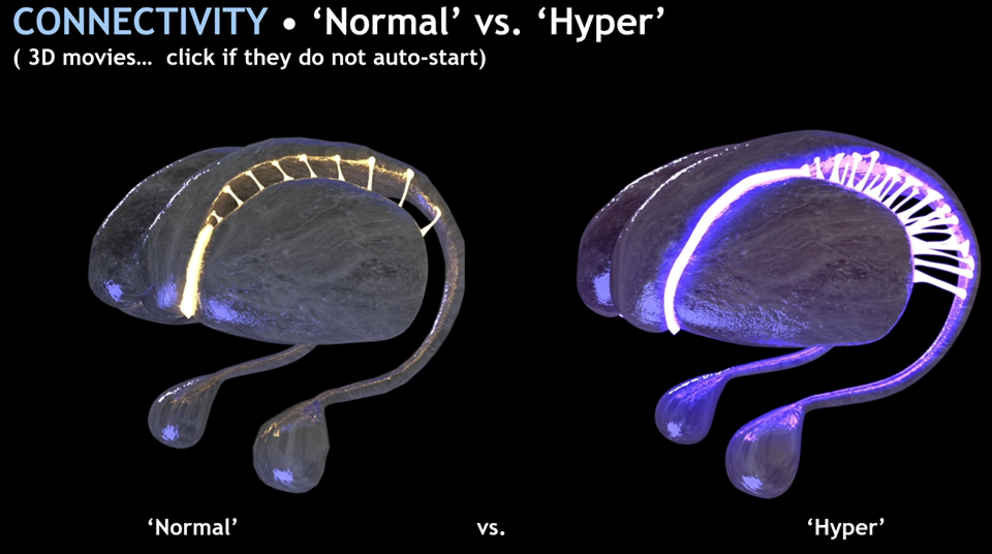
Artist rendering, not to scale.
This signature of high connectivity in the caudate-putamen consists of high functioning individuals—some of whom reported visual and auditory phenomena which include seeing orbs, voices, and entities. These were classed as hallucinations for the purposes of the study. The high connectivity in the caudate-putamen area was correlated, at least in this highly biased cohort, to high IQ, enhanced intuition, high performers, and seems to occur clustered in a few of the families they were able to access.
Dr. Garry Nolan reports that a peer reviewed paper will be coming at some point in the future, but stresses that the data should be at this point considered as extremely preliminary. He felt comfortable enough, he said, to release the information publicly so others can begin to think about the implications. Dr. Nolan also commented that, "Objectively, the connections [in the caudate-putamen] are real (note that Dr. Green is a trained forensic neurologist). What these connectivity patterns mean in relation to intuition and cognitive function will need to involve neurological studies that involve disciplines of neurophysiology such as functional MRI and more".
When pressed about the concept of how anomalous information might enter human consciousness, earlier in 2018 during a conversation with Dr. Nolan he speculated, "Antenna are HYPOTHETICAL nervous system components that READ/SENSE and TRANSMIT. I don't think they would be nerves per se. I think they are COMPONENTS of nerves in some people. The idea is that different people are connected to their antenna in different ways. Some more attuned to sight, some to sounds, feelings, etc."
Dr. Nolan remarked in his slides that what he and Dr. Green found in terms of neural connectivity might have been discovered (or intuited) previously by at least two others.
One of these individuals was the distinguished Oleg Sergeivich Adrianov who happened to be a world renowned neuroscientist from the former Soviet Union, and who had over 70 English publications during the span of his career. He was founder of many FSU Academies and Institutes and headed the commission on the anatomy of Lenin’s brain. Oleg noted “Our interest (in Caudate-Putamen over-expression) is based on the literary data (sic)… it participates in higher integrative activity…”. Oleg also made the following comments regarding this specific region of the brain; “of the frontal (neo)cortex for synthesis of single signals for programming future activity” and “and comparing its results with behavioural reactions of ‘foreseeing the future’ phenomena…” Perhaps one of his most telling assertions was “… Numerous clinical data suggests direct relation of the human brain to a higher psychic function.”
Perhaps even more of a startling revelation and coincidence would be is that as early as the 1960’s intuitive and PhD. Viola Pettit-Neal, as stated in a 1971 interview, made such comments as “The caudate nucleus deals with the head antennae-millions of antennae which in the future will deal with the ability of all the extrasensory perception abilities, such as the ability to see events at a distance and the ability for telepathic contact.” Viola also claimed in her book, “The sending and receiving station for telepathic contact is located in the caudate nucleus.” As well as “There were very fine lines, thousands of them, and the caudate nucleus is like a miniature brain for higher stages of development.” Similar references about these regions of the brain and intuited information were made in her book “Through the Curtain” with Shafica Karagulla, MD.
What might these findings mean for Experiencers, people interested in Unidentified Aerial Phenomena, academia, cutting-edge science, or scientists willing to challenge their curiosity? Is there truly a center in the brain responsible for what we consider extrasensory perception? Is information in part distilled and processed in the caudate-putamen, and those with higher connectivity might have access to forms of intuition that others do not? In any regard, these findings are astounding and at the least we should continue to pay attention to this direction of research. Perhaps the world of science, and the paranormal, might begin to find a meeting point through work like this.
(Most grateful and personal thanks to Dr. Garry Nolan for taking the time to discuss this fascinating information and data with me—and his willingness to share his current speculations. And of course, we are indebted to Dr. Christopher Kit Green and his colleagues for all their decades of effort investigating cutting-edge areas of the science of consciousness and cognition.)

